Time is precious for any construction project, but for the team performing a seismic retrofit of the Transbay Tube beneath San Francisco Bay, every minute counts.
Six nights a week, an army of workers enters one of the tube’s subway tunnels to make the most of the 7.5-hour gap in passenger service. Their six-year mission: to strengthen the 3.6-mile-long tube linking Oakland and San Francisco against a 1,000-year earthquake.
The first step each night is decoupling the 800-ft-long work train and its 14 flatcars packed with materials, equipment and supplies. Crews then deploy the train’s three locomotives, each with its own string of cars, to assigned points along the tube.
“It’s like a pit stop at a NASCAR raceway,” says BART project manager Chuck Bernardo. “The timer starts exactly at 21:40.”
Bay Area Rapid Transit began the $313-million project in 2017, working with a joint venture of Shimmick Construction and California Engineering Contractors as the contractor. Scheduled to be complete in fall 2023, the retrofit is part of BART’s Earthquake Safety Program, which includes $1.2 billion of seismic improvements to the entire system.
Built in 1969, the steel and reinforced-concrete Transbay Tube sits 80 ft underwater, buried by sediment at the bottom of the bay. Its cross-section resembles a pair of binoculars, with two 70-ft-dia tunnel bores that carry the subway trains. The bores are separated by 8-ft-wide spaces known as galleries, used as exhaust chambers and access areas. The entire tube is 48 ft wide and 24 ft high and seismic joints at each end allow 6 degrees of freedom to move in multiple directions in the event of a quake.
While the tube is structurally sound, the retrofit is designed to resist a “maximum credible earthquake,” a 7.1-magnitude quake on the nearby Hayward Fault or an 8.0-magnitude quake on the San Andreas Fault. Landslides caused by large quakes could move the tube, straining and possibly cracking the outer steel shell and causing leaks. To prevent such a scenario, the project’s workers are adding steel plates inside 15 of the tube’s 57 sections as well as installing a new water pumping system and placing rubber membranes beneath the train tracks.
Good Choreography
Work began on the first bore in July 2020, but it was September before crew activities became a “tightly orchestrated dance” with workers mostly operating in a 1,000-ft section of subway tunnel, says Tracy Johnson, BART’s chief development and construction officer. At the end of the shift, the train cars couple up again to clear all personnel, materials and equipment from the tunnel by 4:55 a.m.
“You can’t have anything loose or flapping or anything that isn’t really secured. Those passenger trains go 70 miles an hour. That’s a lot of wind pulling on whatever is being installed out there,” Johnson says.
Installing the liner requires custom-made machinery and flatcars as well as 10,000 tons of steel plating. Mechanical arms lift the plates off the work train and maneuver sections of the curved steel plates into place. Then crews weld the plates together and bolt them into place, using grout to adhere the steel plates to the concrete walls.
Before each night shift, crews stand outside their assigned doors to the tunnel and wait for the signal, Bernardo says. “Right now, we have one crew ready for steel welding and retrofit plate at one door. Another crew will be ready to do the waterproofing membrane and temporary track work in a different area.”
Installing the waterproof membranes beneath the subway tracks without disrupting service is no easy feat. Crews raise a section of track each night, replace its concrete bed and insert a layer of plastic heat membrane. This technique eliminates the need to cut the steel rails.
“The operation is pretty slick—sort of a Lego puzzle,” Bernardo says. “You have to lay the precast concrete ties lengthwise and then rotate them in. There’s barely enough space to place them. That took a while to get acclimated and to do well.”
This waterproofing process required months of practice at a contractor site in Tracy, Calif., where BART paid several million dollars for a mock-up of a tube section. The team also tested and monitored the rails’ temporary support system, which BART developed with Transportation Technology Center Inc., says Zecharias Amare, BART’s group manager with the Earthquake Safety Program. The rails remain intact during construction, but anything supporting those rails is demolished and replaced with temporary braces, supports, kickers and anchors designed to be installed and uninstalled quickly.
The crews’ six hours of production work time each night (the time remaining after mobilizing and demobilizing workers and equipment) is far more generous than originally planned. BART’s reduced service during the COVID-19 pandemic has allowed the team to triple the production work time and add a Friday night shift. The team intends to begin work on the second bore this summer.
“All this additional access and longer production work windows allows us to stay on schedule,” Johnson says. “Otherwise, it would just be so challenging to do this in a two-hour work window every night. You’d no sooner get set up when you’ll be pulling everything down again.”
‘A Memorable Summer’
Before work even began on the main bores, two separate weld-quality issues forced temporary halts and investigations, threatening project delays.
In summer 2019, crews had begun to line the galleries with the steel plates when the contractor reported a problem, Amare says. Inspections revealed flawed welds with no obvious cause. The team first thought wind was the culprit, but shielding the work had no effect. Then they realized that magnetic fields were often disrupting the weld’s electrical arc. The team looked into possible causes, such as magnetization during fabrication or the electrical current generated by the trains or welding machines, but were unable to pinpoint the source. The question remained: How to properly weld these magnetized plates?
For a solution, the team reached out to another industry: shipbuilding. “Shipbuilders are utilizing a different kind of welding now,” Bernardo says. “Traditionally it’s direct-current (DC) welding, but to address the magnetism, it’s been found that alternate current (AC) welding has been more effective.”
DC welding uses an electric current with a constant polarity flow in a single direction, while an alternating current reverses its direction many times per second. The contractor worked with Lincoln Electric to change the current, and that improved the quality of the welds.
Work in the lower gallery revealed a second welding issue around the same time, Bernardo says. Workers were attaching the steel plates to the existing structure via an anchor grouted into the floor. Crews grouted the anchors into the concrete so they wouldn’t uplift if an earthquake caused flooding.
The anchor’s design called for a “friction weld” in the factory that uses vibrations to bind the anchor’s deformed 24-in-high bar with a 3-in-dia head. Once the anchor is set in the tube, the anchor head is welded to the steel plate.
But partway through the work, with hundreds of anchors still to be installed, a number of the anchor heads beneath the installed steel plates began breaking off their deformed bars.
“It wasn’t uniform. They wouldn’t all break at once,” Johnson says. “You’d be down there and hear the ‘squick’ and something would break. There was no pattern. No way to say when or who did these welds. We couldn’t link it to a welder or specific equipment. We were trying to identify if we had a process problem or an execution problem.”
Rather than continue with factory friction welds, designers adopted a mechanical solution. The team fabricated a deformed bar with threads on top, and a head with threads to attach to the bar. The new design was a success. “It was just one more bizarre puzzle to solve,” Johnson says. “It was a very memorable summer.”
In addition to the steel liner and waterproof membrane, the project team is installing new pumping systems to replace the current system, which will remove 1,000 gallons of water per minute in each direction of the tube.
Plans for a seismic retrofit of the tube began with vulnerability studies soon after the 1989 Loma Prieta earthquake, Johnson says. BART recovered quickly from the 6.9-magnitude temblor, resuming partial service almost immediately and full service within 48 hours.
BART retrofitted the tube’s 1960s-designed joints in 2009, officials say, adding a “big steel Band-Aid” to protect the tube against a potential underwater landslide.
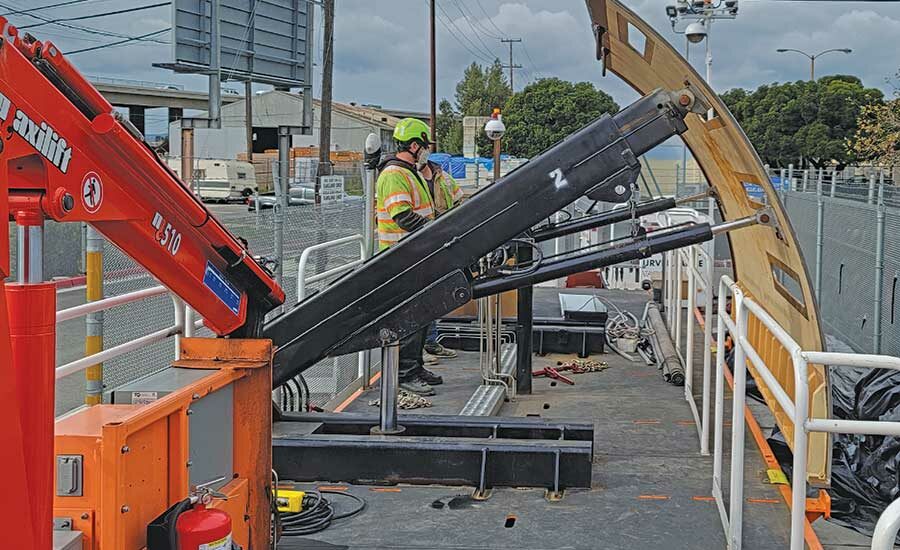
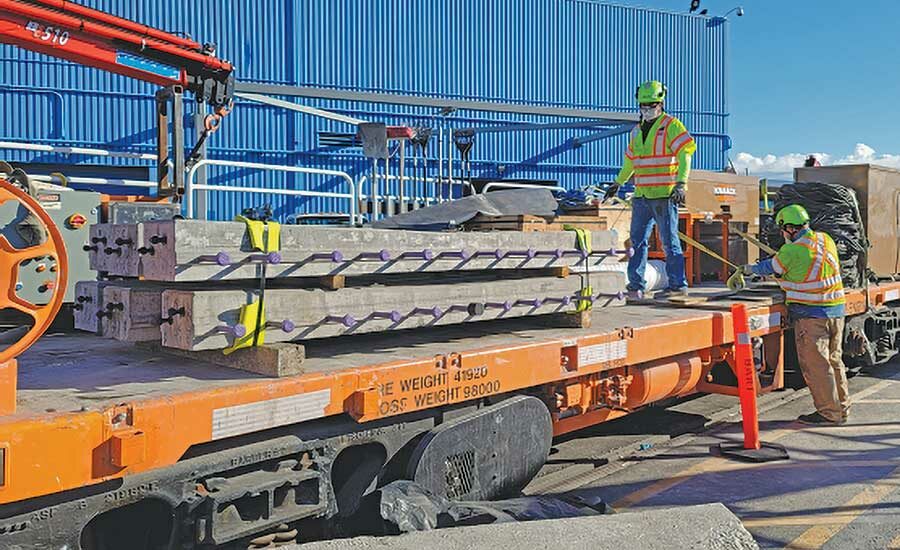
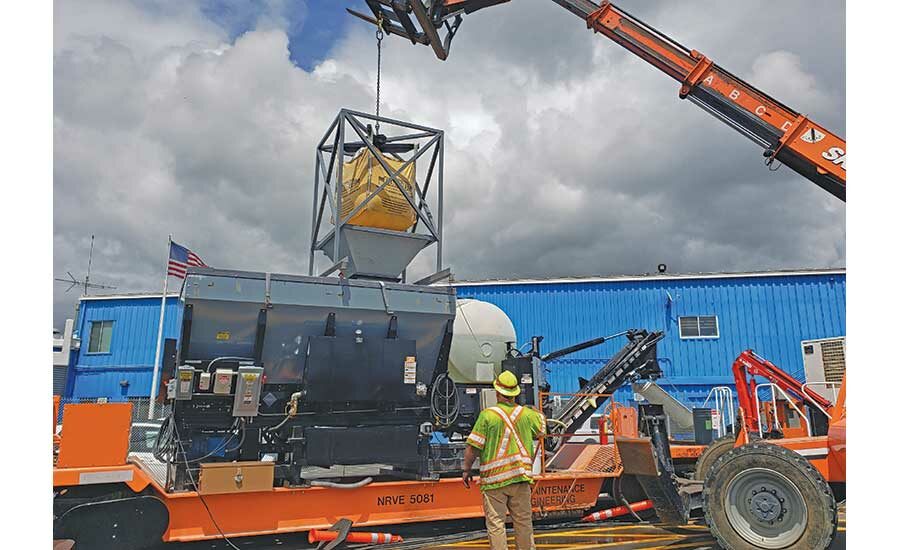
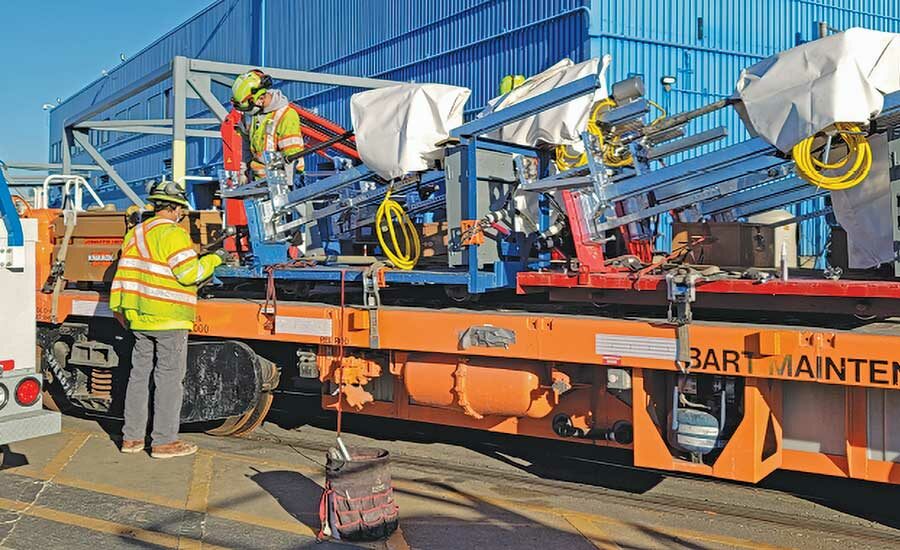
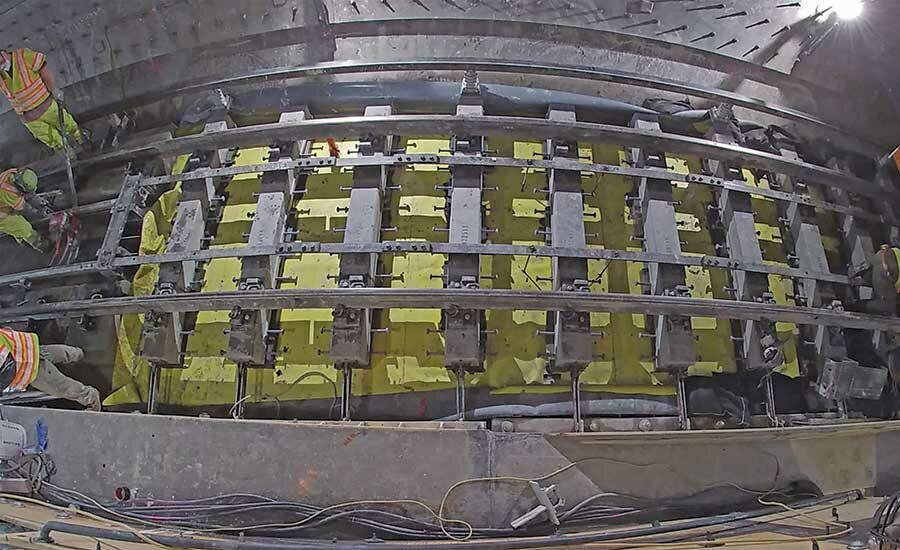
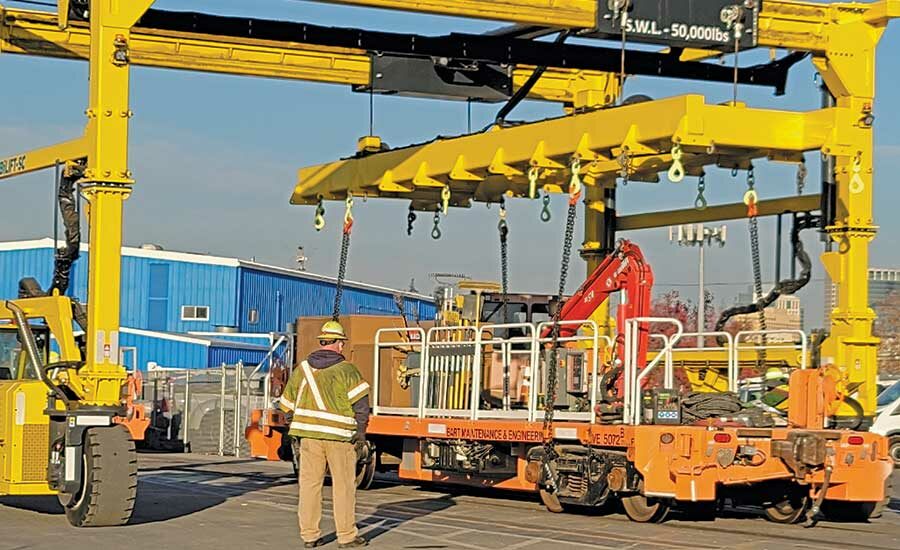


Post a comment to this article
Report Abusive Comment